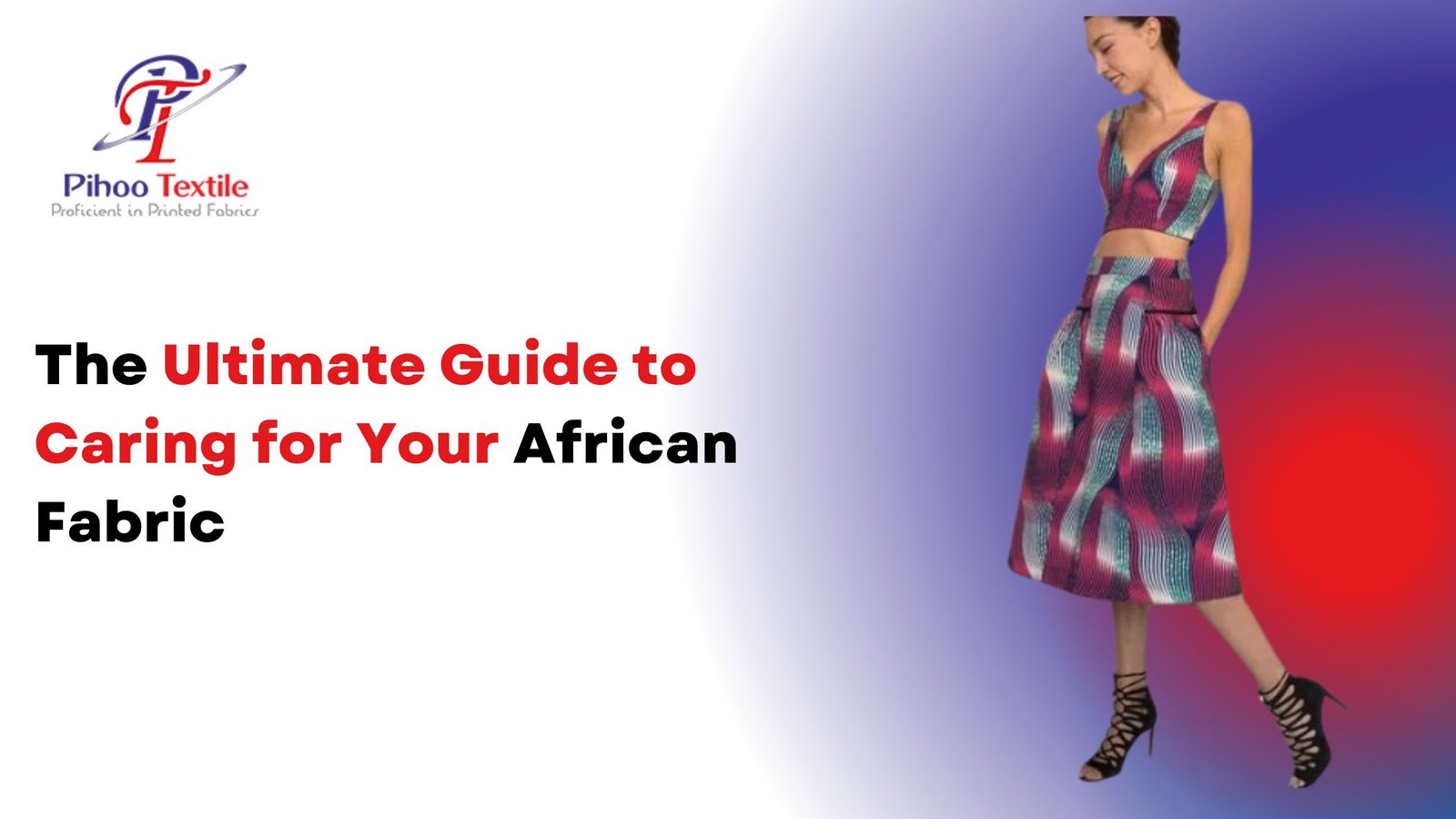The Ultimate Guide to Caring for Your African Fabric
Color is an asset—until the wash turns it into a liability. The difference isn’t luck; it’s process. As one manufacturer puts it plainly: “Cotton is a natural product. Shrinkage of 5% is therefore possible.” Treat that as design input, not disaster. If you’re sourcing authentic wax prints or kitenge and want the beauty to outlast the season, build the right care into your workflow from day one. That’s why discerning buyers start with credible, in-country supply—and pair it with smart maintenance. If you’re working with Pihoo Textile, consider this your operating manual for keeping fabrics brilliant without babying them. (Vlisco, Vlisco Support)
Test Your Fabric
Care starts before the first wash. Expect some early-life dye release with many wax prints; that’s not a defect—it’s chemistry. One brand advises: “Due to the dyeing method… the material may lose color during the first few washes… wash and dry the garments separately… until confident that the color is not running anymore.” That single habit can save returns, reviews, and reputations. (nomadic artisan)
Bleed Check
Do a controlled bleed test on an inside hem or spare swatch: damp white cloth, light pressure, 30 seconds. If dye transfers, cold-water hand rinse until it runs clear, then proceed to wash. Many makers summarize the choice set like this: “There are three options to clean your wax print fabrics—dry-clean, hand wash or machine wash.” Choose based on construction (lining, interfacing, embellishment), not convenience. (Orente Fashions NZ)
Washing
Start with label logic. As one workshop guide opens, “The first step… is to check the care label… Always follow the manufacturer’s recommendations.” If there’s no label (yardage or custom makes), default conservative: cold to 30 °C, mild detergent, inside-out, colors separated. (Dovetailed)
Hand Washing
Hand wash is the safe baseline for wax prints, especially unlined garments or pieces with trims. Agitate gently; do not wring, rub, or twist—you’ll stress both the print film and the cotton weave. (Yes, that wording appears on multiple manufacturer pages for a reason.) Rinse thoroughly and press out water with a towel. (Vlisco Support, Jansen Holland)
Machine Washing
Where construction allows, machine is viable—but set it up like a lab, not laundry roulette. “The cycle should be selected as non-spin and the temperature… not more than 30 degrees.” Use a delicate program, zip garments into laundry bags, and keep prints away from abrasive trims (denim rivets are silent killers). (Hilton Textiles – London)
Drying
Heat is the enemy of color fidelity. Line-dry, inside-out, in the shade. One retailer even gets down to execution detail: after washing, “line dry… by securing them with pegs or clip fasteners so that it does not leave any marks.” Tumble only if your label explicitly permits—and then on low. (Hilton Textiles – London)
Ironing
Shine marks erase the “new” from new. A practical rule from a care pro: “Always iron on the wrong side of the fabric… use a low to medium heat setting. A little steam can help with stubborn creases.” If you must iron face-up, lay a press cloth between the plate and the print. (River & Mara)
Bleaching
Bleach is a print’s worst enemy. Swap it for oxygen-based brighteners only if labels allow. One community guide spells it out: use “a gentle or mild detergent that is free of harsh chemicals and bleach.” Trust the boring bottle; it saves the exciting fabric. (B & B African Prints)
Dry Cleaning
Dry cleaning has its place, especially for structured garments or pieces with embedded stiffness/embellishment. But it’s not a universal hall pass. Maker guidance is clear: “For dry cleaning, ensure the dry cleaner is familiar with African wax print.” If the brand says no dry clean (common with certain embellished runs), believe it. (Orente Fashions NZ)
Stain Removal
Speed > strength. Tackle oils and sauces immediately with a mild, diluted detergent dab—never neat bleach. If the piece is lined, test on the hem first; cheap linings can migrate dye under moisture and heat. (Manufacturers warn: “Bad quality lining materials can cause colour staining and shrinkage.”) Build this check into your studio SOPs. (Vlisco Support)
Storage
Color doesn’t fade in the closet—sunlight does that job. Store away from windows; avoid damp zones (cellulose + moisture = mildew). For long hangs, use wide, fabric-covered hangers to prevent shoulder bubbles; for heavy sets and yardage, fold flat with acid-free tissue. If you ship, include care cards—this turns returns into loyalty.
Additional Care Tips
Rapid rules, zero fluff:
Turn garments inside-out before wash or iron—abrasion happens on the outside. (Vlisco Support)
Expect ~5% shrinkage on cotton; patternmakers should build ease accordingly. (Vlisco, Jansen Holland)
Keep lights and darks separate—and do the first two washes solo. (Vlisco Support)
Prefer 30–40 °C max; colder water extends color life. (Dovetailed)
Skip the spin (or keep it minimal) on unlined, all-print garments. (Hilton Textiles – London)
When in doubt, hand wash; when confident, delicate cycle. (Kipfashion)
Closing Reflection
Great African prints don’t just survive care; they compound—the drape softens, the story deepens, the closet keeps reaching for them. The job isn’t to baby the fabric; it’s to respect its physics: temperature, chemistry, abrasion, and time. Add a bleed test up front, treat heat like a controlled substance, and use detergents that clean without stripping. That’s how a six-yard idea becomes a five-year favorite.
If you’re building collections or replenishment programs with Pihoo Textile, align product excellence with process excellence: specify care in your product pages, include a label that buyers actually read, and ship with a plain-English card. The print will take care of the brand story—you just take care of the print. (Hilton Textiles – London, Vlisco Support)
Source highlights quoted above: Vlisco care pages (“Shrinkage of 5%…”, “Wash light and dark colours separately. Wash inside out. Do not wring, rub or twist.”), Hilton Textiles (“non-spin… not more than 30 degrees.”; “line dry… with pegs…”), Dovetailed (“Check the care label… Always follow the manufacturer’s recommendations.”), Òrenté (“There are three options to clean your wax print fabrics…”), River & Mara (“Always iron on the wrong side…”), B&B African Prints (“mild detergent… free of… bleach”), and manufacturer warnings on poor linings causing color transfer. (Vlisco, Vlisco Support, Hilton Textiles – London, Dovetailed, Orente Fashions NZ, River & Mara, B & B African Prints)


